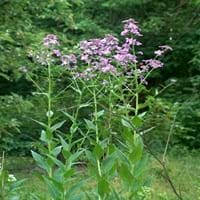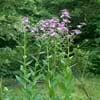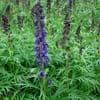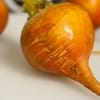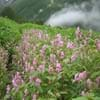Life Span
Biennial
Perennial
Type
Herbs
Broadleaf Evergreen
Origin
Southern Europe, Western Europe, Russia/Siberia, Central Asia, Western Asia
New Zealand
Types
Summer lilac, Winter gilliflower
Bigleaf hydrangea, Hortensia, Smooth hydrangea, Oakleaf hydrangea, Annabelle
Number of Varieties
Not Available
Habitat
meadows, Open areas, Roadsides, Woodlands
Forest edges, Hillside, Woods
USDA Hardiness Zone
4-9
8-11
AHS Heat Zone
9 - 1
Not Available
Habit
Clump-Forming
Upright/Erect
Flower Color
White, Pink, Lavender
White
Flower Color Modifier
Bicolor
Bicolor
Fruit Color
Not Available
White, Blue
Leaf Color in Spring
Green, Dark Green
Burgundy, Dark Red, Copper
Leaf Color in Summer
Green, Dark Green
Burgundy, Dark Red, Copper
Leaf Color in Fall
Green, Dark Green
Burgundy, Dark Red, Copper
Leaf Color in Winter
Light Green
Burgundy, Dark Red, Copper
Leaf Shape
Ovate
Oblovate
Plant Season
Spring, Summer
Spring, Summer, Fall, Winter
Sunlight
Full Sun, Partial Sun
Full Sun, Partial Sun, Partial shade
Type of Soil
Clay, Loam, Sand
Loam, Sand
The pH of Soil
Neutral, Alkaline
Neutral, Alkaline
Soil Drainage
Well drained
Well drained
Bloom Time
Late Spring, Early Summer, Summer
Late Spring, Early Summer, Summer
Tolerances
Not Available
Drought, Salt
Where to Plant?
Container, Ground
Container, Ground
How to Plant?
Seedlings, Stem Planting, Transplanting
Seedlings, Stem Planting
Plant Maintenance
Medium
Medium
Watering Requirements
Average Water Needs, Water when top layer of soil becomes dry
Not Available
In Summer
Lots of watering
Drought Tolerant, Average Water
In Spring
Moderate
Moderate
In Winter
Average Water
Average Water
Soil pH
Neutral, Alkaline
Neutral, Alkaline
Soil Type
Clay, Loam, Sand
Loam, Sand
Soil Drainage Capacity
Well drained
Well drained
Sun Exposure
Full Sun, Partial Sun
Full Sun, Partial Sun, Partial shade
Pruning
Remove damaged leaves, Remove dead branches, Remove dead leaves
Remove damaged leaves, Remove dead branches, Remove dead leaves
Fertilizers
All-Purpose Liquid Fertilizer
All-Purpose Liquid Fertilizer
Pests and Diseases
Red blotch
Red blotch
Plant Tolerance
Drought
Drought, Salt
Flowers
Showy
Insignificant
Flower Petal Number
Single
Single
Foliage Texture
Medium
Coarse
Foliage Sheen
Matte
Not Available
Attracts
Bees, Butterflies, Hummingbirds, Insects
Bees, Flies
Allergy
Vomiting
Chest tightness, Diarrhea, Dizziness, Nausea, Vomiting
Aesthetic Uses
Bouquets, Landscape Designing, Showy Purposes
Not Available
Beauty Benefits
Not Available
Not Available
Edible Uses
Yes
Not Available
Environmental Uses
Air purification
Air purification
Medicinal Uses
Nutrients
Fever, Kidney problems, Urinary tract problems
Part of Plant Used
Flowers, Leaves, Seeds
Flowers, Root
Other Uses
Showy Purposes, Used As Food, Used as Ornamental plant
Not Available
Used As Indoor Plant
Yes
Not Available
Used As Outdoor Plant
Yes
Yes
Garden Design
Cutflower, Mixed Border, Wildflower
Container, Feature Plant, Foundation, Houseplant, Screening, Wind Break, Tropical
Botanical Name
HESPERIS matronalis
CORDYLINE australis 'Red Star'
Common Name
Dame's Rocket, Sweet Rocket
Cabbage Tree, Cordyline, Dracaena, Red Star Cordyline
In Hindi
डेम के रॉकेट
Hydrangea
In German
Rockets Freifrau
Hortensie
In French
Rocket Dame
Hortensia
In Spanish
Rocket Dame
Hortensia
In Greek
Rocket Dame του
υδραγεία
In Portuguese
Rocket de Dame
Hortênsia
In Polish
Rocket Dame
Hortensja
In Latin
Hesperis Rocket
Hibiscus
Phylum
Magnoliophyta
Not Available
Class
Magnoliopsida
Not Available
Order
Brassicales
Not Available
Family
Brassicaceae
Liliaceae
Genus
Hesperis
Not Available
Clade
Angiosperms, Asterids, Eudicots
Not Available
Tribe
Hylocereeae
Not Available
Subfamily
Cactoideae
Not Available
Number of Species
Not Available
Not Available
Importance of Dame's Rocket and Red Star Cordyline
Want to have the most appropriate plant for your garden? You might want to know the importance of Dame's Rocket and Red Star Cordyline. Basically, these two plants vary in many aspects. Compare Dame's Rocket and Red Star Cordyline as they differ in many characteristics such as their life, care, benefits, facts, etc. Every gardener must at least have the slightest clue about the plants he wants to plant in his garden. Compare their benefits, which differ in many ways like facts and uses. The medicinal use of Dame's Rocket is Nutrients whereas of Red Star Cordyline is Fever, Kidney problems and Urinary tract problems. Dame's Rocket has beauty benefits as follows: Not Available while Red Star Cordyline has beauty benefits as follows: Not Available.
Compare Facts of Dame's Rocket vs Red Star Cordyline
How to choose the best garden plant for your garden depending upon its facts? Here garden plant comparison will help you to solve this query. Compare the facts of Dame's Rocket vs Red Star Cordyline and know which one to choose. As garden plants have benefits and other uses, allergy is also a major drawback of plants for some people. Allergic reactions of Dame's Rocket are Vomiting whereas of Red Star Cordyline have Chest tightness, Diarrhea, Dizziness, Nausea and Vomiting respectively. Having a fruit bearing plant in your garden can be a plus point of your garden. Dame's Rocket has no showy fruits and Red Star Cordyline has showy fruits. Also Dame's Rocket is not flowering and Red Star Cordyline is not flowering . You can compare Dame's Rocket and Red Star Cordyline facts and facts of other plants too.
